Jangadeiros usually leave for three-day or four-day trips on the high sea. The caught fishes are kept in the jangada underdeck among ice blocks.
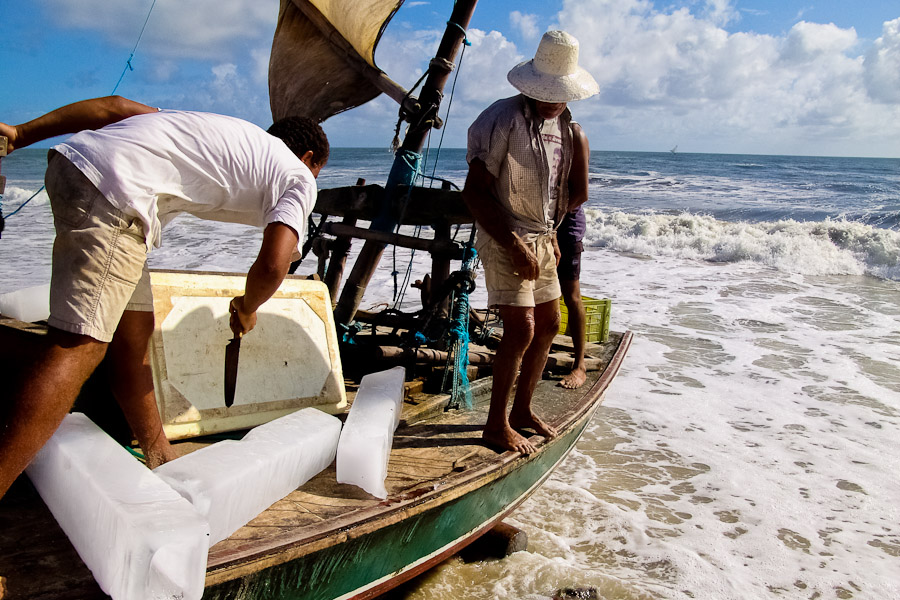

Jangada is about seven metres long, entirely wooden boat. The boat construction reminds a sailboat but it is based on a raft design. Jangada does not have a fixed keel to be easily parked on the beach.
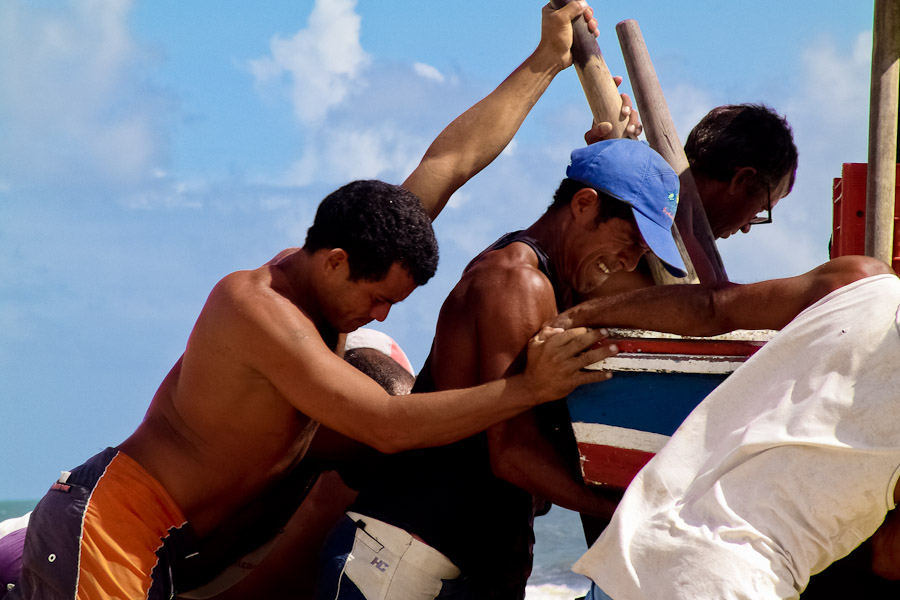

Jangada takes in a crew of four or five fishermen. There are always two crew members watching out at night when jangada is anchored on the high sea.
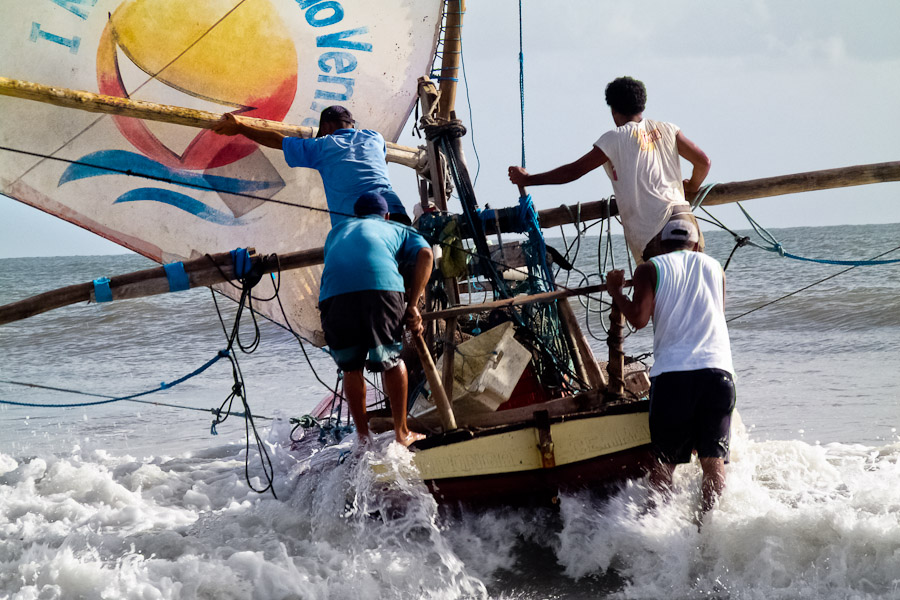

Jangadeiros do not own the boats. The owner of jangada does not put to sea but deals with fish. The owner supplies food and drink, he pays the ice blocks for keeping the caught fish.
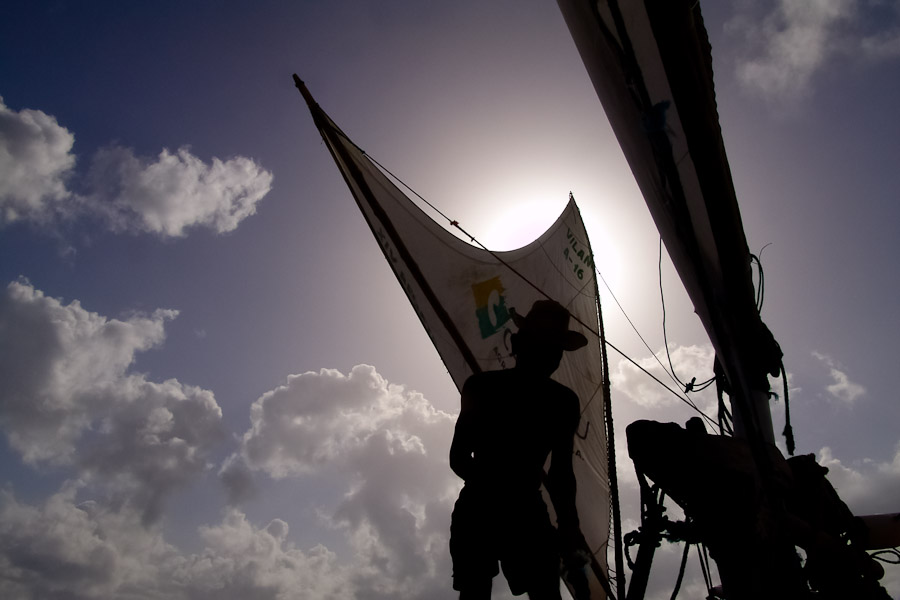

Jangadeiros move the boat towards the sea using wooden logs. Jangada has an unfixed keel and a mast that make it practical for a use on the shallow sea and beaches of the nothern Brazil.
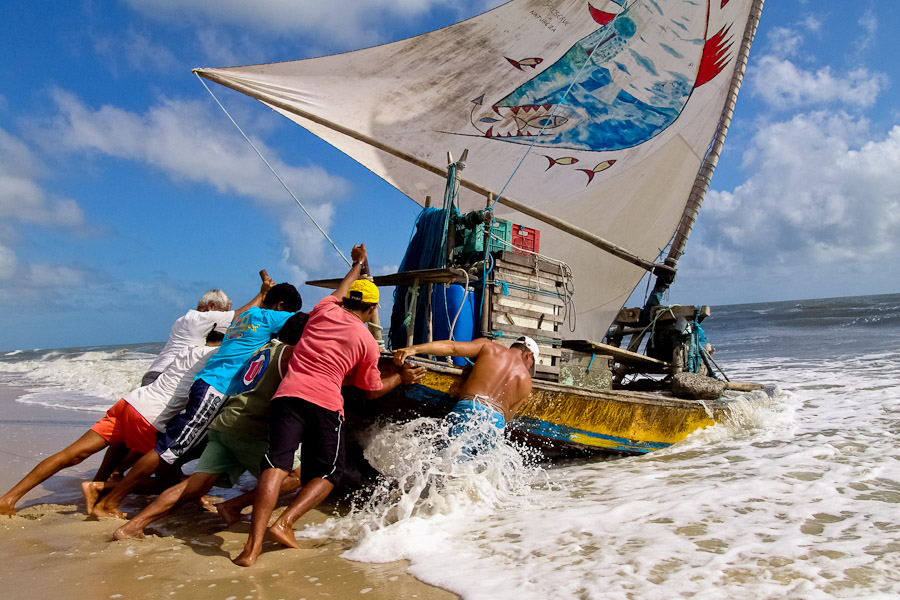

The wind is the biggest danger for the fishermen. The jangada mast is made of seven pieces, each of different type of wood. Inspite of that there are casualties related to the jangadeiros' work on the high sea every year.
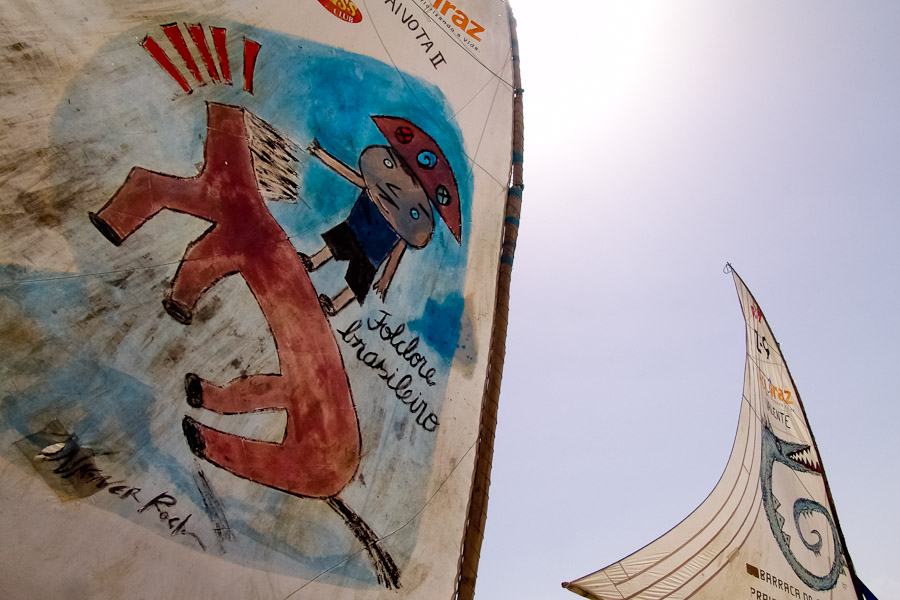

The fisherman guts fish on the beach. The fisherman has just his fishing line, hooks and a knife. Every jangadeiro on the boat fishes on his own, they do not share the catch.
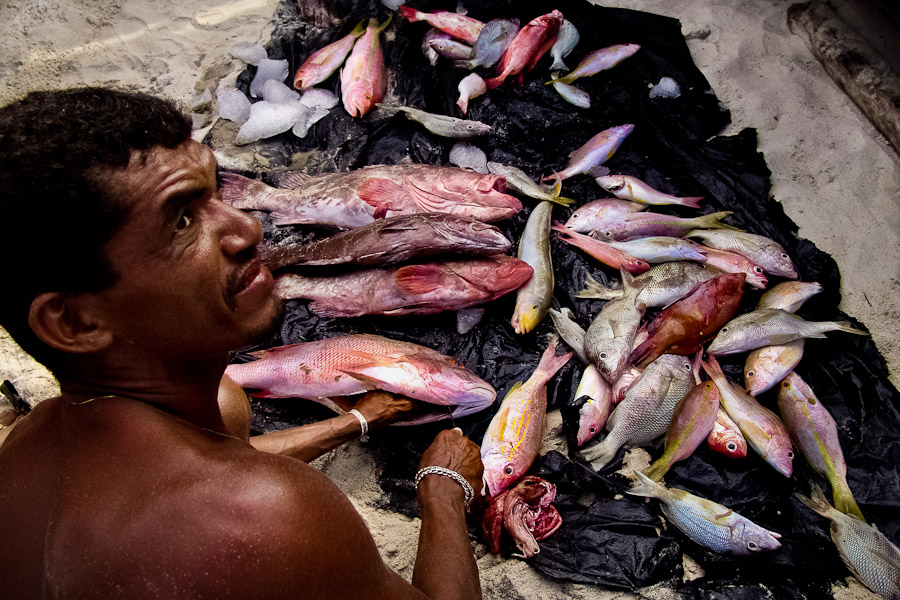

Jangada is an entirely hand made boat, every piece from different type of wood. The sides of the boat are made from masaranduba wood which is sea-water resistent.
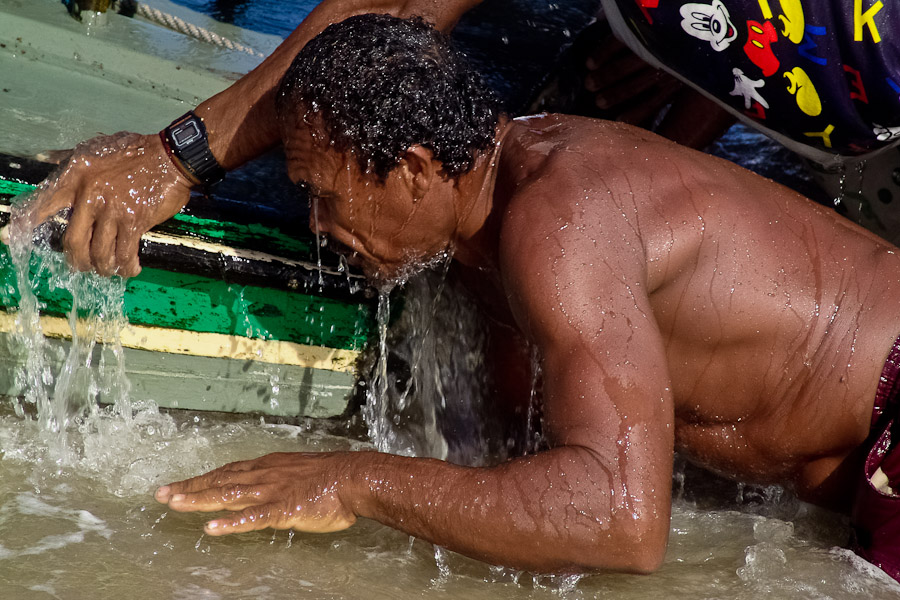

The fish abundance has dramatically decreased in the last years. Jangadeiros face up the pressure from motorized ships which are much more effective (and destructive) than jangada.
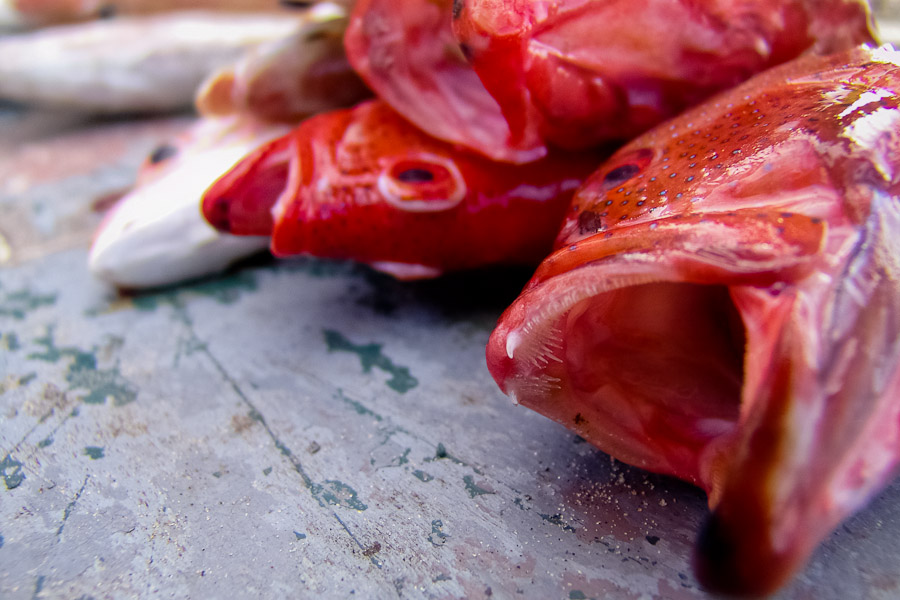

A fish catch is always devided fifty-fifty: a half for the fishermen, the other half for the boat owner. People from the village and fishmongers come to buy fish, right on the beach when jangada gets back.
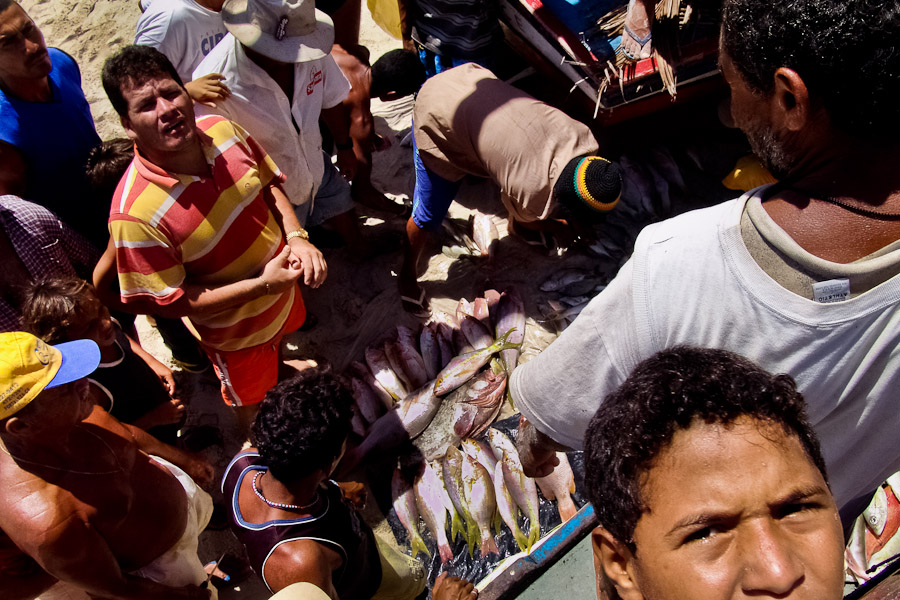

Jangadeiros find the way back following the coastline shape, the mountains if they are visible, they navigate by the Southern Cross and by the city lights at night. They can point out the coast by waves direction.
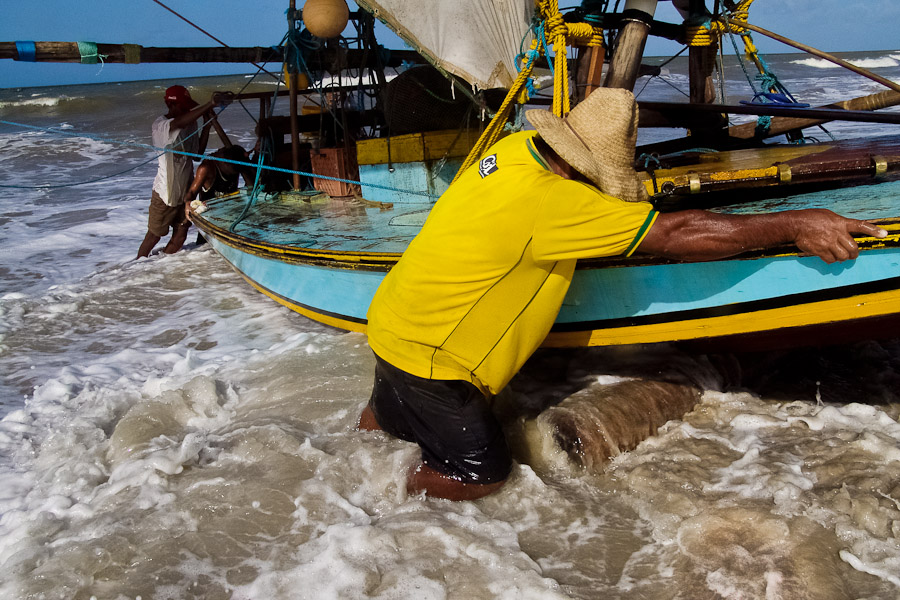

Jangadeiros usually work six days a week. The favourite relax is a football game on the beach.
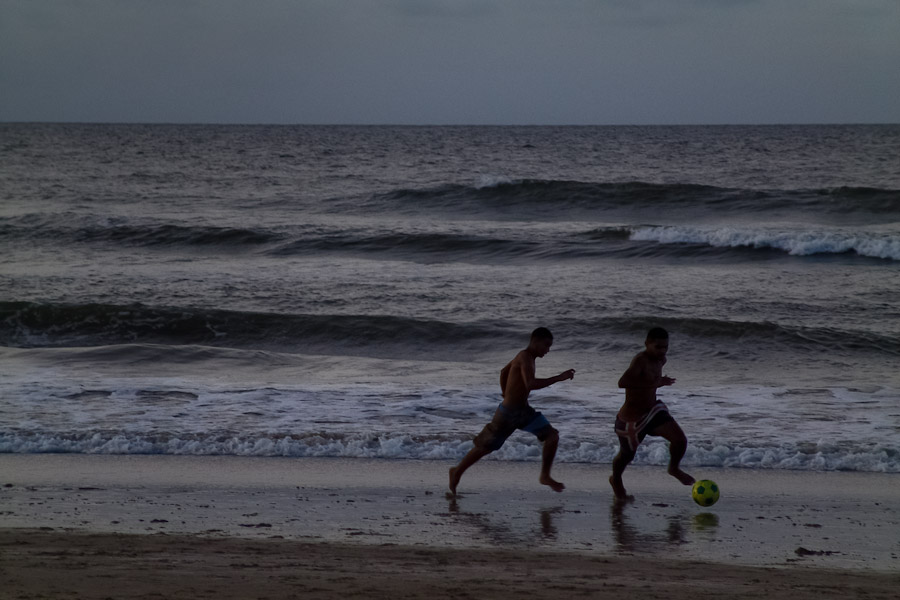

The smallest jangada (boti) is a two or three metres long craft with no keel. It is used by young boys or a single fisherman for quick trips not far from the coast.
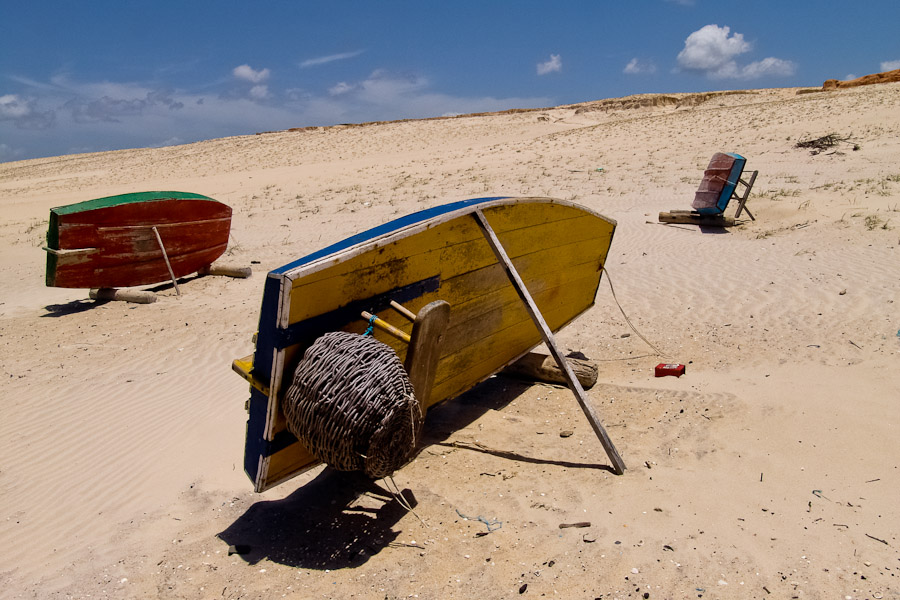

Jangadeiros
Ceara, Brazil – March 2004
Jangadeiros, working on a unique wooden raft boat called jangada, keep the tradition of artisan fishing for more than four hundred years. However, being a fisherman on jangada is highly dangerous job. Jangadeiros spend up to several days on high-sea, sailing tens of kilometres far from the coast, with no navigation on board. In the last two decades jangadeiros have been facing up the pressure from motorized vessels which use modern, effective (and environmentally destructive) fishing methods. Every time jangadeiros come back from the sea with less fish.

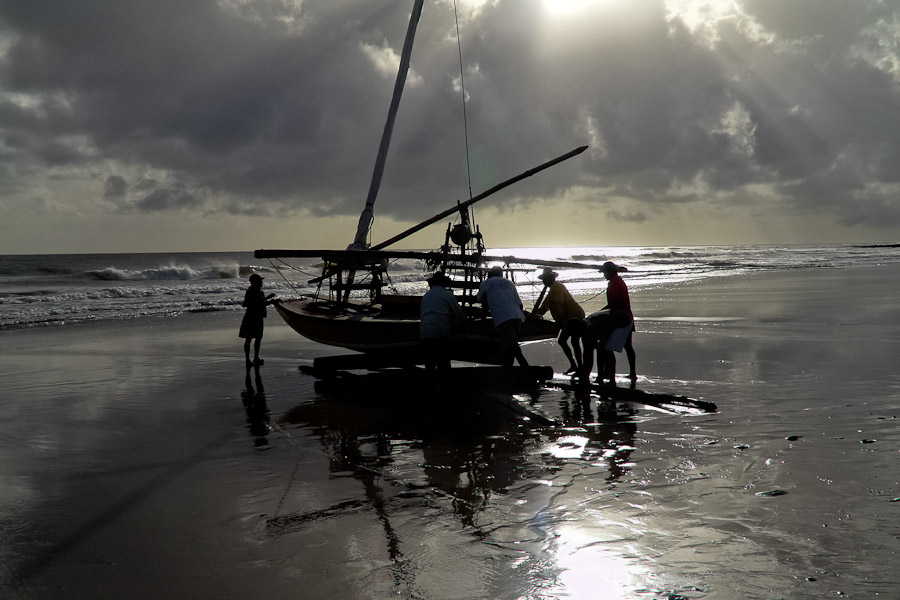

no comments yet